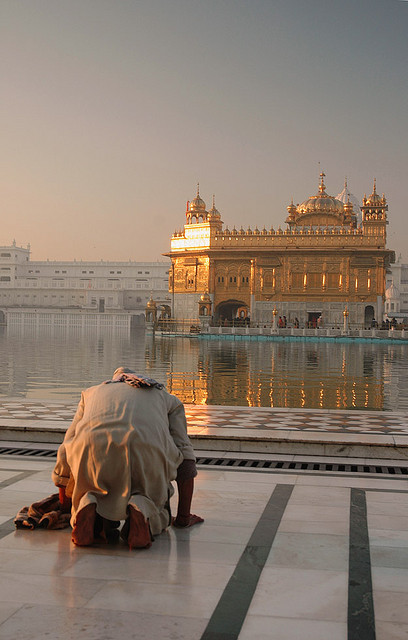
The night Nimo, Jay, and I arrived in Amritsar, India, we made a cursory survey of the Sikh Golden Temple, wandering around the outer area and meditating at its river banks. The next morning, we woke up at 3:00 A.M. to get there when friends recommended it was at its peaceful best. We waited in line and did darshan [a form of spiritual seeing] in the temple, and meditated there for some time. As we walked around, Nimo mentioned several times how the space felt so inviting. The universal love embedded in Sikhi felt embodied in the space. You didn’t feel judged, coerced, bothered. All came as they were, and were accepted into the fold of the place in an effortless, respectful flow. Whether you wanted somewhere to eat, sleep, or pray, this was a clean, inviting space for anyone to come and be. No one ran, pushed in line, gave a dirty look. The rich marble floors and walls were spotless, the water pristine, soothing sweet live kirtan music played in the background to set a sacred mood around the clock, with large LCD displays in the corners of the temple translating in real time in English and Hindi.

As we walked out of the temple that morning, I heard a haggard old lady’s voice asking for people to give her space to come through. She was an old, shriveled, rail-thin woman, walking with a cane, cutting through the crowd. She was violently hunchbacked, bent over nearly ninety degrees. She hobbled gingerly on weak limbs and clutched the pant legs of passersby to keep balance, all the while looking straight down because of her back. Like everyone else, she has come to do her darshan. And not just on the ground floor; as she clutched my leg and walked by, I looked back and saw that she was climbing up the steep flight of stairs I had just come from to visit a relatively minor part of the temple. Only in places as spiritually charged as this do you see such miracles of faith and strength. […]
—Neil Patel: “Golden Temple,” PARABOLA, Fall 2015. This issue is available here.